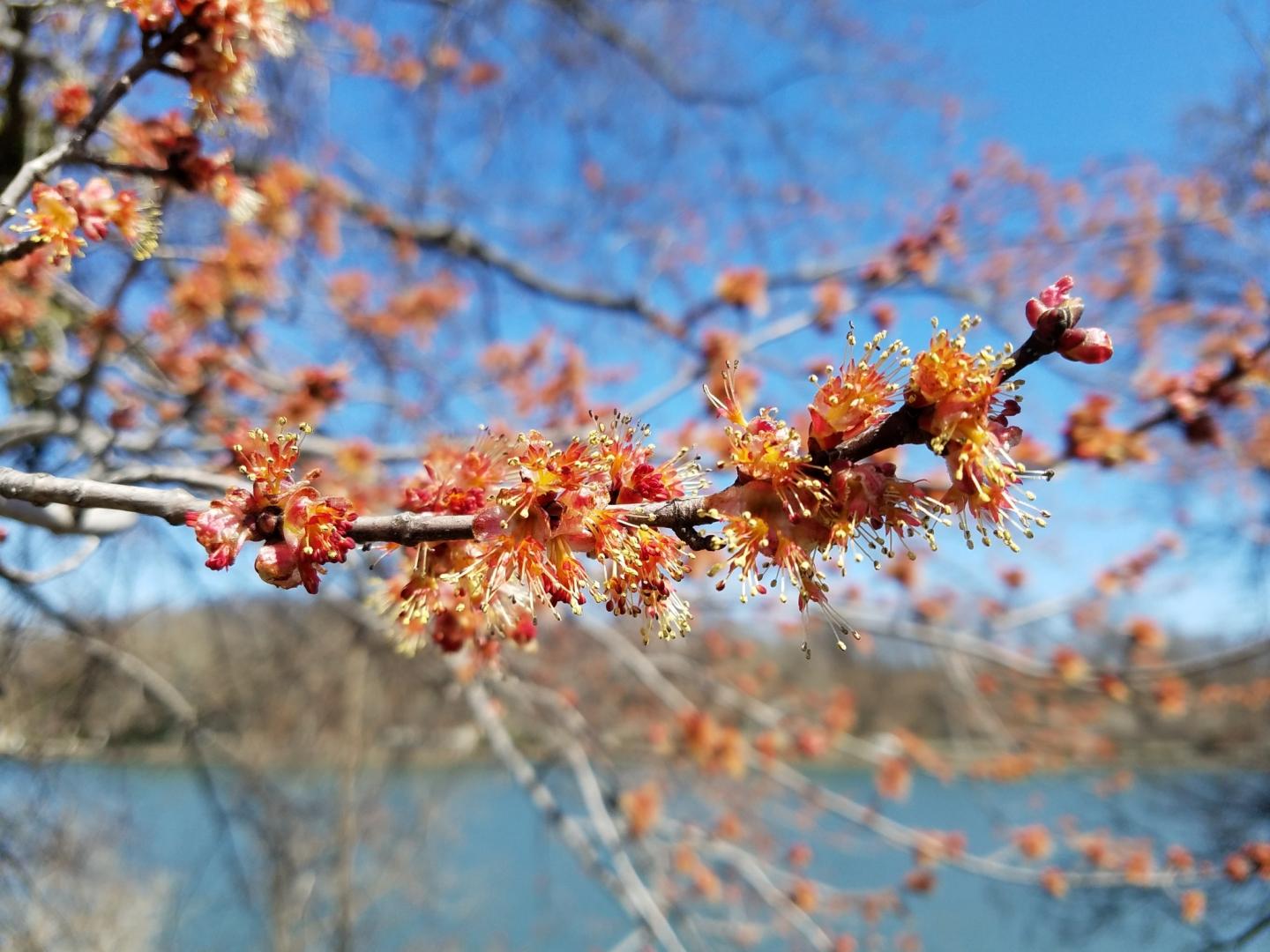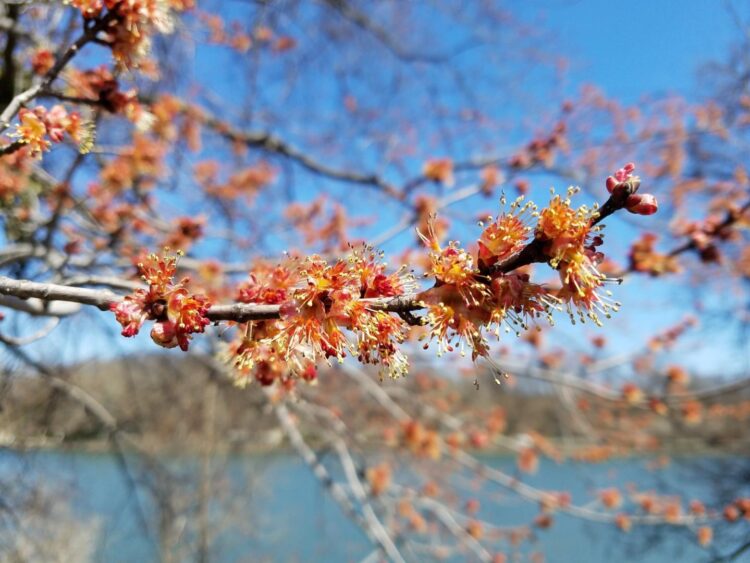
Credit: Douglas Sponsler, Penn State
UNIVERSITY PARK, Pa. — Trees, shrubs and woody vines are among the top food sources for honey bees in urban environments, according to an international team of researchers. By using honey bees housed in rooftop apiaries in Philadelphia, the researchers identified the plant species from which the honey bees collected most of their food, and tracked how these food resources changed from spring to fall. The findings may be useful to homeowners, beekeepers and urban land managers who wish to sustain honey bees and other bee and pollinator species.
“We know that cities can support a surprising diversity of bee species; however, cities are complex environments, and traditional floral surveying methods can be hard to implement,” said Christina Grozinger, Distinguished Professor of Entomology and director of the Center for Pollinator Research, Penn State. “By analyzing the pollen that honey bees brought back to their colonies and how the weights of these colonies changed every hour, we were able to identify the flowering plants that provide the most nutrition for bees in Philadelphia, and understand how these resources change across the seasons.”
The researchers installed 12 apiaries, each containing three honey bee colonies, at locations throughout Philadelphia. Each colony was equipped with a pollen trap for capturing incoming pollen and a scale for logging its weight once per hour. The team visited each apiary monthly to collect pollen samples. They sequenced the DNA from the samples to determine which plant genera were present in each sample. Their findings appeared on April 27 in the journal Ecosphere.
“Ours is the first study to combine two novel techniques — continuous colony weight monitoring and pollen DNA metabarcoding — to answer simultaneously the questions of ‘what’ and ‘how much’ with respect to the flowers that are available to foraging insects,” said Douglas Sponsler, postdoctoral scholar in entomology, Penn State. “Colony weight patterns tell us when resources are plentiful and when they are scarce. Pollen DNA metabarcoding tells us which plants are available at a given time and how the floral community changes through the year.”
The team found that the availability of floral resources in Philadelphia follows a consistent seasonal pattern — floral resources are plentiful in spring, scarce in summer, and briefly plentiful again in late summer and early fall before becoming scarce for the remainder of the year.
Specifically, trees like maples, oaks and willows were the most important spring pollen sources. During the summer when resources were scarce, crepe myrtle, Japanese pagoda tree and devil’s walking stick emerged as important species. In summer and fall, woody vines, such as Virginia creeper, English ivy and autumn clematis, dominated the pollen samples.
“Vines are not traditionally regarded as major foraging resources for pollinators, and what we discovered in our study system may be a novelty of urban ecosystems,” said Sponsler. “Vines such as the ones we found thrive on the vertical surfaces of built environments, and many of them have been introduced by humans as garden plants.”
According to the researchers, the study highlights at least three actionable findings.
- Bees need flowering trees, so urban forestry should be a top priority in urban land management.
- Many of the plants that were important in the study are associated with once-disturbed habitats that now harbor rich floral resources, so weedy areas should be valued.
- While native plant species are usually the best for supporting bees and other pollinators, ornamental plant species can provide important nutritional resources as well, particularly in periods when other plants are not blooming.
“Care should be taken to avoid plants with a strong potential to become invasive,” said Sponsler. “But as far as ornamentals go, summer-blooming species like Japanese pagoda tree and crepe myrtle might alleviate seasonal shortages of floral resources. In the eastern U.S., native species like eastern redbud, American linden and some varieties of hydrangea are good options for ornamental plantings.”
Groziner noted that although caution should be taken in extrapolating the findings to cities beyond Philadelphia, the overall consistency of the team’s findings with comparable datasets suggests that the patterns seen in the data are likely the same as would be found in similar locations. Grozinger noted that several other studies from their group have found that ornamental plants can provide good nutrition for bees, and often provide season-long blooms. More information on creating gardens for pollinators can be found on the Penn State Master Gardeners Pollinator Garden Certification Program site.
“Our data can inform urban land management, such as the design of ecologically functional ornamental plantings, while also providing practical guidance to beekeepers seeking to adapt their management activities to floral resource seasonality,” Grozinger said.
###
More information about this project can be found at https:/
Other authors on the paper include Don Shump, owner, Philadelphia Bee Company, and Rodney Richardson, postdoctoral researcher, York University.
The U.S. Department of Agriculture supported this research.
Media Contact
Sara LaJeunesse
[email protected]
Related Journal Article
http://dx.





